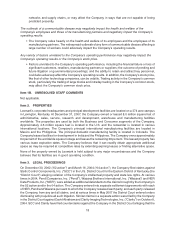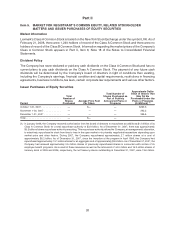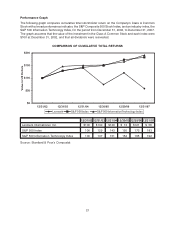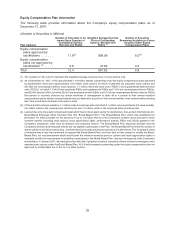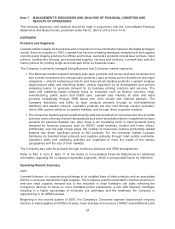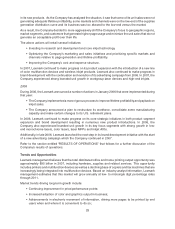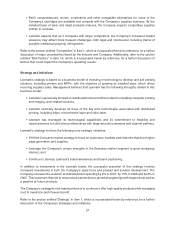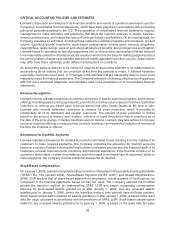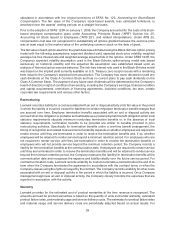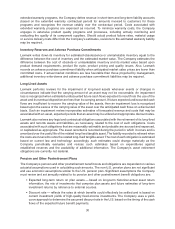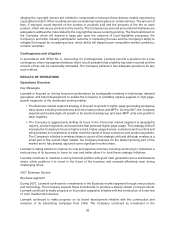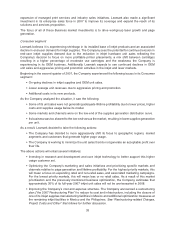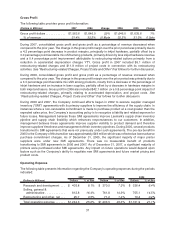Lexmark 2007 Annual Report Download - page 33
Download and view the complete annual report
Please find page 33 of the 2007 Lexmark annual report below. You can navigate through the pages in the report by either clicking on the pages listed below, or by using the keyword search tool below to find specific information within the annual report.• Refill, remanufactured, clones, counterfeits and other compatible alternatives for some of the
Company’s cartridges are available and compete with the Company’s supplies business. As the
installed base of laser and inkjet products matures, the Company expects competitive supplies
activity to increase.
• Lexmark expects that as it competes with larger competitors, the Company’s increased market
presence may attract more frequent challenges, both legal and commercial, including claims of
possible intellectual property infringement.
Refer to the section entitled “Competition” in Item 1, which is incorporated herein by reference, for a further
discussion of major uncertainties faced by the industry and Company. Additionally, refer to the section
entitled “Risk Factors” in Item 1A, which is incorporated herein by reference, for a further discussion of
factors that could impact the Company’s operating results.
Strategy and Initiatives
Lexmark’s strategy is based on a business model of investing in technology to develop and sell printing
solutions, including printers and MFPs, with the objective of growing its installed base, which drives
recurring supplies sales. Management believes that Lexmark has the following strengths related to this
business model:
• Lexmark is exclusively focused on distributed home and office network or desktop computer printing
and imaging, and related solutions.
• Lexmark internally develops all three of the key print technologies associated with distributed
printing, including inkjet, monochrome laser and color laser.
• Lexmark has leveraged its technological capabilities and its commitment to flexibility and
responsiveness to build strong relationships with large-account customers and channel partners.
Lexmark’s strategy involves the following core strategic initiatives:
• Shift the Consumer market strategy to focus on customers, markets and channels that drive higher
page generation and supplies;
• Leverage the Company’s unique strengths in the Business market segment to grow workgroup
devices; and
• Continue to develop Lexmark’s brand awareness and brand positioning.
In addition to investments in the Lexmark brand, the successful execution of this strategy involves
increased investments in both the Company’s sales force and product and solution development. The
Company increased its research and development spending by 9% in 2007, by 10% in 2006 and by 8% in
2005. This investment has led to new products and solutions aimed at targeted growth segments as well as
a pipeline of future products.
The Company’s strategy for dot matrix printers is to continue to offer high-quality products while managing
cost to maximize cash flow and profit.
Refer to the section entitled “Strategy” in Item 1, which is incorporated herein by reference, for a further
discussion of the Company’s strategies and initiatives.
27



